An occultation is an event that occurs when one object is hidden from the observer by another object that passes between them. — Wikipedia
In this article I compare two alternative space-based technologies, Solar Power Stations vs a sun blocking Occulus, that could be developed to combat global warming. I will compare the engineering challenges, risks, and implantation strategies as well as the approximate costs to implement.
Global Warming Situation
Anthropomorphic Climate Change
Almost by definition, the climate changes and always will. Putting aside the question of whether human caused climate change is fundamentally worse than natural climate change, there is widespread agreement that humans are changing the climate through the increase in CO2 levels in the atmosphere released through the burning of fossil fuels. CO2 is a so called greenhouse gas and ensures the planet is warmer than it would otherwise be. Over the history of the earth, CO2 has been scrubbed from the atmosphere through various means so that the CO2 levels have decreased substantially over the eons. Until humans, the primary means for replenishing CO2 was volcanic activity. Over the age of the earth, large quantities of CO2 have been sequestered deep underground where over millions of years this carbon was subject to high temperatures and pressures which converted into items like coal and gas. The drilling of oil and gas or the extraction of coal brings this material back to the surface where, when burned, release this stored CO2 back into the atmosphere.

The CO2 levels are currently the highest in the last 25 million years (figure 0-1, 0-2). During periods of higher CO2 levels- say about 30million years ago, it appears that there were no large ice masses and sea levels were 100m higher. (Bice, n.d.)
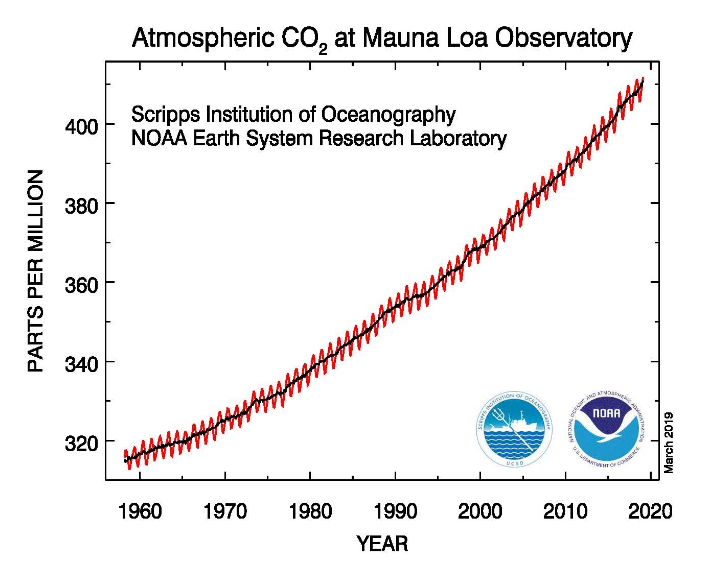
Global warming can be disruptive to human civilization as well as putting stress on natural ecosystems. In this article we address the global warming in two different ways. If global warming is a concern, then either the Solar Shade (or Occulus) or Space Based Solar Power (SBSP) can help. If, however, the concern is increased CO2 (and the associated global warming), then only the SBSP will be an effective solution.
Economic Costs
To determine the practicality of either solution, we need some idea about the cost impacts of global warming as well as the resources that nations and people are willing to spend. Human concern about Global Warming appears to be high, and hundreds of billions are being spent annually to address, but the efforts are disjointed, frequently in conflict with other priorities, and arguably have led to no decrease in CO2 emissions. According to a Bloomberg report the world spent $501.3 billion in 2020 alone (Saul & Mathis, 2021). Currently the most optimistic projections are for the rate of CO2 increase to slow down but an actual decrease will not occur for another century.
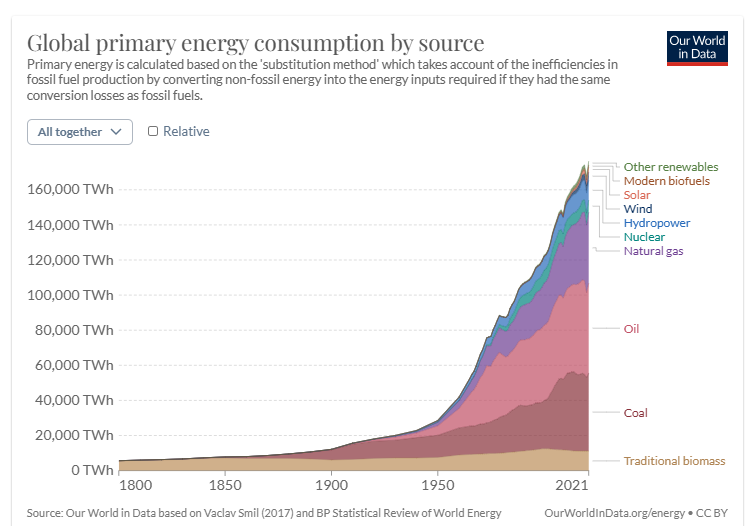
Despite the large resources spent on green energy the political and social will to for meaningful reduction in greenhouse gas emissions appears low. To give a quick illustration over the last thirty years, over 100 nuclear power plants that are essentially emission free have been decommissioned across the world despite this causing a substantial increase in CO2 emissions (Statista Reasearch Department, 2023).
Per Figure 0-3, over the last 50 years, energy usage has gone up by about 100,000TWh. If the current trends persist, we will continue to increase at the rate of about 2000TWh per year. This is the equivalent of about 228 GW of power coming online annually- of 228 nuclear power plants.
To show the challenge that this would be, over the last twenty years or so Hydropower, Wind, Solar, Biofuels and other renewables generation have increased to about 20,000TWh, or about 2,300GW or only 1/5th the increase in energy usage.
Space Based Solutions
There are two space-based solutions that can make a meaningful impact to global warming- either large Space Based Solar Power Systems (SBSPs) or a Solar Occulus which will serve as a solar shade to reduce radiation hitting the earth.
Space Based Solar Power (SBSP)
Beamed Solar, or Space Based Beamed Solar Power (SBSP) has been widely recognized since the 1970’s as an extremely promising real-world application for space industry. Its advantages over earth based solar power are substantial and include:
- The Sun’s solar radiation is much stronger in space than on the surface of the earth.
- Depending on the placement of the SBSP, solar radiation may be virtually uninterrupted, eliminating the need for power storage devices like batteries or storage reservoirs.
- It moves large infrastructure off earth thereby saving land. (Note the SBSP receiving stations will be quite large but can be placed in remote areas, and like wind turbines, the land beneath the receiving rectennas can be used for limited purposes)
The issue with beamed solar is that to provide meaningful power the power station needs to be extremely large and typically requires all the materials to be launched from Earth. In order to minimize power interruption, they are generally conceived to be placed in geosynchronous orbit. The electricity generated would be converted to microwaves and beamed down to a receiving rectenna station on earth.
Any space-based solution will require substantial costs for development. Because of this it is reasonable to assume that we should develop extremely large power generation plants in order to justify the large upfront development costs. For planning purposes, let’s assume we would like a 10GW power station- equal to that of ten large earth based nuclear reactors. If we assume a solar panel efficiency of about 24% (currently state of the art efficiency for spacecraft) and a power transmission efficiency of 85% we will need to have a extremely large SBSP mass (but much smaller than an earth based plant). Let’s assume we receive 1400W/m2 in our orbit. With 24% solar cell efficiency we will be able to create about 336We/m2. With 85% beam efficiency we are down to 286we/m2. This power would be beamed down to the earth via microwaves. For 10GW we will need 3.4965×107 m2– or a square solar panel 5,913m2– 5.9km on a side. The very efficient Juno Spacecraft generated about 35w/kg of solar panel. Using this we can calculate that our mass will be 2.857×108kg or 285,714 mt.
Using a reasonable but ambitious launch cost of $100per kg our costs would be $28.6 billion just for orbiting the SBSPs mass. To get the all-in costs, we need to add the development costs. The development cost would primarily be absorbed by the design of the first power plant. Let us assume about $20 billion in development costs are required.
To this we need to add the actual construction of the solar power plant, including the solar panels, structure and microwave transmitters. According to Global Com (Global , n.d.) a weather satellite costs about $290million- or for a 3mt satellite almost $100,000/kg. Conversely, Musk has indicated that a Starlink satellite costs less than $250,000 each (Wang, 2019). The latest version of Starlink, V1.5 weighs 306kg which indicates a cost of $816/kg. Their Starlink system already has many thousands of satellites mass produced at relatively low prices.
Let us assume that for a large power plant we will have additional economies of scale and can get the initial manufacturing cost down to $100kg. In this case our 10GWe satellite total costs would be about $77 billion. A 10GW SBSP would require about 1900 SpaceX Starship launches of about 150mt each.
With thousands of launches we can assume some efficiencies and I assume costs drop $10kg for each 1900 launches until a final cost of $50kg is reached. For the commercial airline industry, costs vary wildly depending on distance and aircraft type, but a typical aircraft may fly a 100kg person for a $500 ticket which implies a cost of only $5 per kg. While this seems unrealistic for a rocket, I do believe that if we were launching thousands of rockets per year, additional cost reductions could be achieved. Elon Musk, in 2020, stated his goal would be to launch a Starship for $1.5 million which equates to only $10kg.
After the first article is built, development costs would go to near zero. Furthermore, I assume that the manufacturing costs will drop as we gain efficiencies with each additional power plant by implementing lessons learned, economies of scale and manufacturing improvements. As with the launch costs, I show manufacturing costs drop linearly by $10 kg for each SBSP plant produced until a final cost of $50kg is reached by the sixth unit.
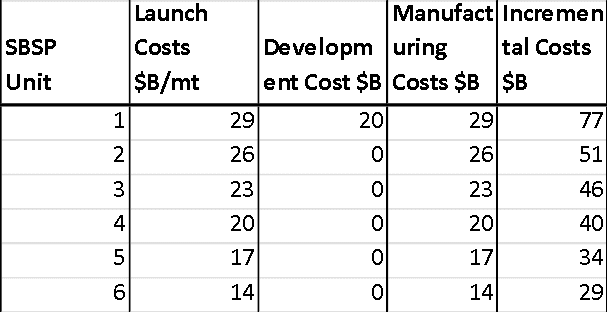
This will drive the sixth and subsequent unit price down to about $29 billion a piece. After this, fixed launch fuel, normal maintenance costs and diminishing returns will level out the price reductions.
Solar Flux Reduction- The Solar Occulus
The projected growth in energy usage in the third world as shown in Fig 0-3 means it will likely be nearer to the end of the century before CO2 levels even out and start decreasing. For these reasons I looked at the feasibility of a quick, lower-tech, shorter term fix. This fix would address global warming and be able to address it quickly- within the next twenty years. Instead of trying to create greener power we would reduce the solar flux in order to reduce the earth’s temperature.
Suppose we blocked 2% of the sun’s energy with a large solar shade (which I will refer to as an Occulus because it sounds better than a solar shade)- how would that effect our temperature? Using the so-called Stefan Boltzmann equation, we can calculate the temperature change. The Equation for calculating temperature for a body at the earth’s distance from the sun is:
Equation 0-1: 
where:
σ is the Stefan-Boltzmann constant (5.67*10-8 W/m2K4)
Rʘ is the radius of the sun in meters. This is 696 x 106 m
Tʘ is the temperature of the sun in Kelvin. The surface temperature of the sun at Rʘ is 5780K
RT is the distance of the earth from the sun- or about 1.496×1011m.

Or a temperature of around 278.8K. This is called the effective temperature and assumes all energy hits the ground, that the earth is a perfect absorber, and there is no atmosphere.
For an Occulus that reduced the solar flux by 2% our planet’s temperature would be 276.3K or a decrease of 2.5C. This comfortably spans the projected temperature increase over the next century.
To accomplish this reduction, a large Occulus would be placed just past the L1 Lagrange point which is about 1.5million km inside the earth orbit, or about 1% of the distance between the earth and sun. The geometry of the Earth and L1 position mean that to fully block out the sun everywhere on earth the diameter of the Occulus would need to be 28,000km or as appearing from Earth about twice the apparent diameter of the sun (as shown in Figure 0-4). Such an Occulus would have an incredible area of 555,716,324 km2.

Fortunately, we want to block only 2% of the sun’s radiation and would require a more manageable but still huge area of 11,114,326 sq km. The diameter of such a device would be 3,762 km.
How massive would such a structure be? With high performance solar sails engineers are looking at materials that mass less than what the local solar gravity force is- about 1.53 g/m2– the so-called lightness number. This very ambitious requirement is one of the reasons solar sailing has not been seriously applied for space travel. Some of the best materials currently available and considered for solar sails mass about 7g/m2 (mylar). Let’s assume an even less ambitious material that when combined with a rigid structure masses 10g/m2. For a 1km2 shade we would mass 10mt. Using this our 2% Occulus would mass 11.143×108 mt.
At 150mt per launch, and a projected launch costs of $100kg, we would require 741,000 launches at a total cost of $11.144 trillion! Note that this seems to be unrealistic as the world GDP in 2021 was on the order of only $100 trillion. Nevertheless in 2019 there were about 38.9 million commercial flights worldwide (Statista Reasearch Department, 2023) so it is not impossible to envision that over the next few decades that the number of rocket launches will grow significantly. If, as with the SBSP scenario, we drop costs every 1900 launches, we will reach our target cost of $50kg very quickly and early on in the program, reducing our costs to about ½ of the original estimate.
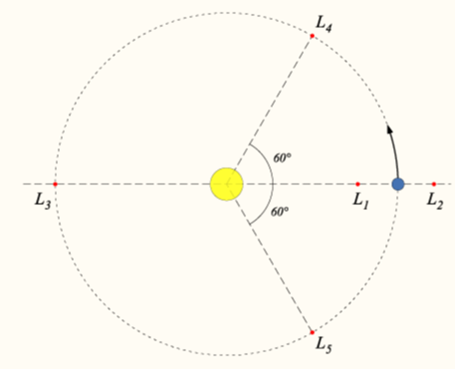
To calculate the complete costs we need to add design and development costs. Since the solar Occulus is fairly low tech (compared to the SBSP system) I assigned a cost of $10 billion.
Finally, the manufacturing cost of the Occulus needs to be added. As opposed to the solar power facility, I proposed that the simpler design of the Occulus should lead to a much lower cost at the beginning- 1/20th the SBSP manufacturing costs per kg or about $5kg. For comparison, a typical 2mt $50,000 car costs $25/kg. Bulk materials are much cheaper- in the case of aluminum costs are typically $2-$3 kg.

We can show the costs of the initial Occulus increments in Table 0-2. The Occulus will start out relatively small- intercept only .1% of the radiation. The first .1% Occulator will cost $316 billion, and each follow up section $306billion. To intercept a full 2% of solar energy would cost $6.12 trillion. If spread out over a 20-year implementation period this works out to about $310 billion per year.
Despite this high cost, it may be advantageous to build an Occulus. The Occulus is scalable- we may start out with one that intercepts only .1% of the solar flux and gradually expand it over several decades as needed and as other technologies evolve that reduce greenhouse gas emissions. Expanding it to 2% would negate the next 100 years of temperature increases, buying additional time to develop SBSP, and Fusion/Fission. In short, a $6 trillion Occulus is equivalent to building 2070 GWe of SBSPs (or about 10 years of projected worldwide annual growth in electricity usage) but negates the next 100 years of global warming.
Alternate Designs
The proposed design has the simplicity of a single large structure able to be adjusted and moved as needed to vary the desired effect. Alternate designs are available that may be preferred.
We could place multiple large “Occulators” closer to the earth that block the sun’s rays periodically. These could be placed in any orbit but perhaps be easiest to maintain would be a geosynchronous one. Since this orbit is only 1/42nd as far as L1 our Occulus would only need to be about 1/42nd the diameter for the same amount of shade and its area only about 6301 km2. This area would work out to only about 1/764th the size of our L1 Occulator. Unfortunately, at this distance from the earth the occulator satellite would transit the sun in only about 2 minutes. To keep a continuous progression of such transits, we would need a total of about 720 satellites in a circular band around the earth- negating a large portion of the size advantage. Perhaps as importantly, these hundreds of large shades would be visible at night, each likely brighter than the full moon. Nighttime would be effectively eliminated- not a very green solution.

Note the triangular vanes used for tacking and manuevering.
Occulus Design, Station Keeping, Orientation and Positioning
Effectively the Occulus will be a large (though poorly performing) solar sail. Like a solar sail, it will have various moveable flaps or panels (see Fig 0-6, O-7) and will be maneuverable enough for station keeping as the L1 point is not completely stable due to the effects of the moon’s gravity. It may be cost effective to build several large sections of the Occulus in earth orbit and then using their intrinsic solar sail capabilities, gradually raise their orbit until they get to the L1 point. The Occulus would be just inside the L1 point where the photon force from the sun would counteract the net gravitational forces that our shade would experience.
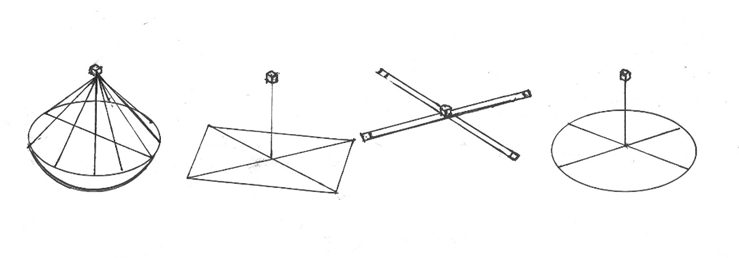
The Occulus could be built in many configurations similar to those for large solar sails. It would likely be a tension structure where the tension is caused by a slow rotation rate. The benefit of the Occulus over a solar sail is that a solar sail needs to be large but feather light to achieve high performance, but our Occulus does not. The only reason mass is important is the substantial costs associated with earth launch.
Additional Uses
The Occulus and its associated technology have even more exciting applications further into the future. A very large Occulus placed at the Venusian L1 point could make this planet habitable- though it would need to be much larger in order to block most of the sunlight (say 90%) so as to quickly start lowering the planet’s temperature.
We could also use a modified version of an Occulus as a large reflector or mirror which if placed in either a large orbit or perhaps at a planets L2 point and appropriately focused, can add energy (heat) to a planet (Mars for example) to help raise its temperature.
Summary and Conclusions
If greenhouse gas emissions and their implied increase in global temperatures are an issue that needs to be addressed, we as a species are currently failing. Increased emissions by third world countries along with little or no expansion in the use of nuclear power in advanced countries has led to a substantial increase in CO2 emissions over the last twenty years despite large subsidies on “green” energy items like wind and solar. Solar Based Power Stations, while requiring large upfront costs, look to provide a viable and green alternative to other technologies.
The Occulus is an expensive but technologically viable solution that would address the concern of increasing temperatures forecast over the next century. The construction of the Occulus would serve to buy time until better solutions (SBSP, Fusion, Fission) can be developed and become available.
A more complete assessment of the challenges of building a starship not addressed in this series of articles are discussed on my website https://www.allthingsspace.info.
Bibliography
Bice, D. (n.d.). Carbon Dioxide Through Time. Retrieved from Earth in the Future: https://www.e-education.psu.edu/earth103/node/1018
Global . (n.d.). The Cost of Building and Launching a Satellite. Retrieved from GlobalCom : https://globalcomsatphone.com/costs/
Pagini, e. a. (2005). Carbon Dioxide Through Time. Retrieved from Earth in the Future: https://www.e-education.psu.edu/earth103/node/1018
Ritchie, H., Roser, M., & Rosado, P. b. (2017). Energy Production and Consumption. Retrieved from Our World in Data: https://ourworldindata.org/energy-production-consumption
Saul, J., & Mathis, W. (2021, January 19). Spending on Global Energy Transition Hits a Record $500 Billion. Bloomberg.
Statista Reasearch Department. (2023, June 9). Number of permanent shutdowns of nuclear reators worldwide from 2005 to June 2023. Retrieved from Statista: https://www.statista.com/statistics/238656/number-of-nuclear-reactors-shut-down-worldwide/
Wang, B. (2019, December 10). SpaceX Starlink Satellites Could Cost $250,000 Each and Falcon Costs Less than $30 Million. Retrieved from Next Big Future: https://www.nextbigfuture.com/2019/12/spacex-starlink-satellites-cost-well-below-500000-each-and-falcon-9-launches-less-than-30-million.html
David W McGuire is a retired veteran from the USAF and AF Reserve where he held various jobs as an Acquisition and Procurement Officer, C-5 Maintenance Officer, Maintenance Squadron Commander and Deputy Group Commander. He retired as a Colonel. He also has worked in the chemical, pipeline and petroleum industries where he held varied positions including Terminal Manager, Regional Accountant Manager, Regional Engineering Manager, and Regional Operations Director. He has a degree in Aerospace Engineering and an MBA.

